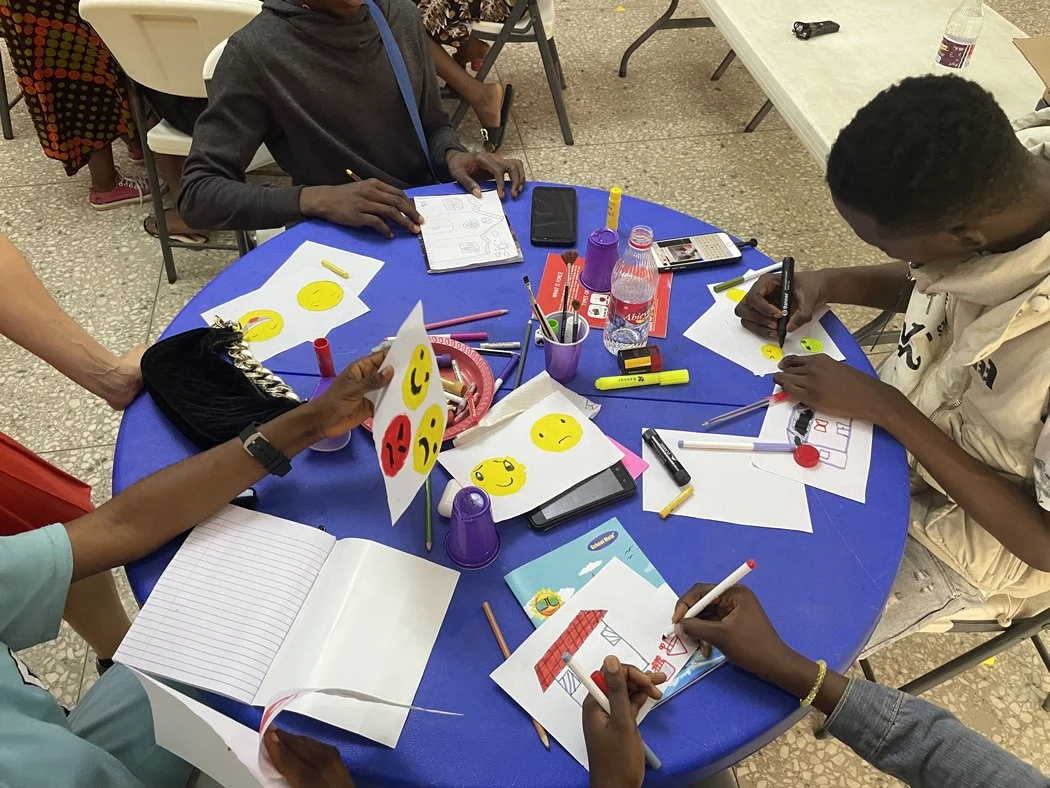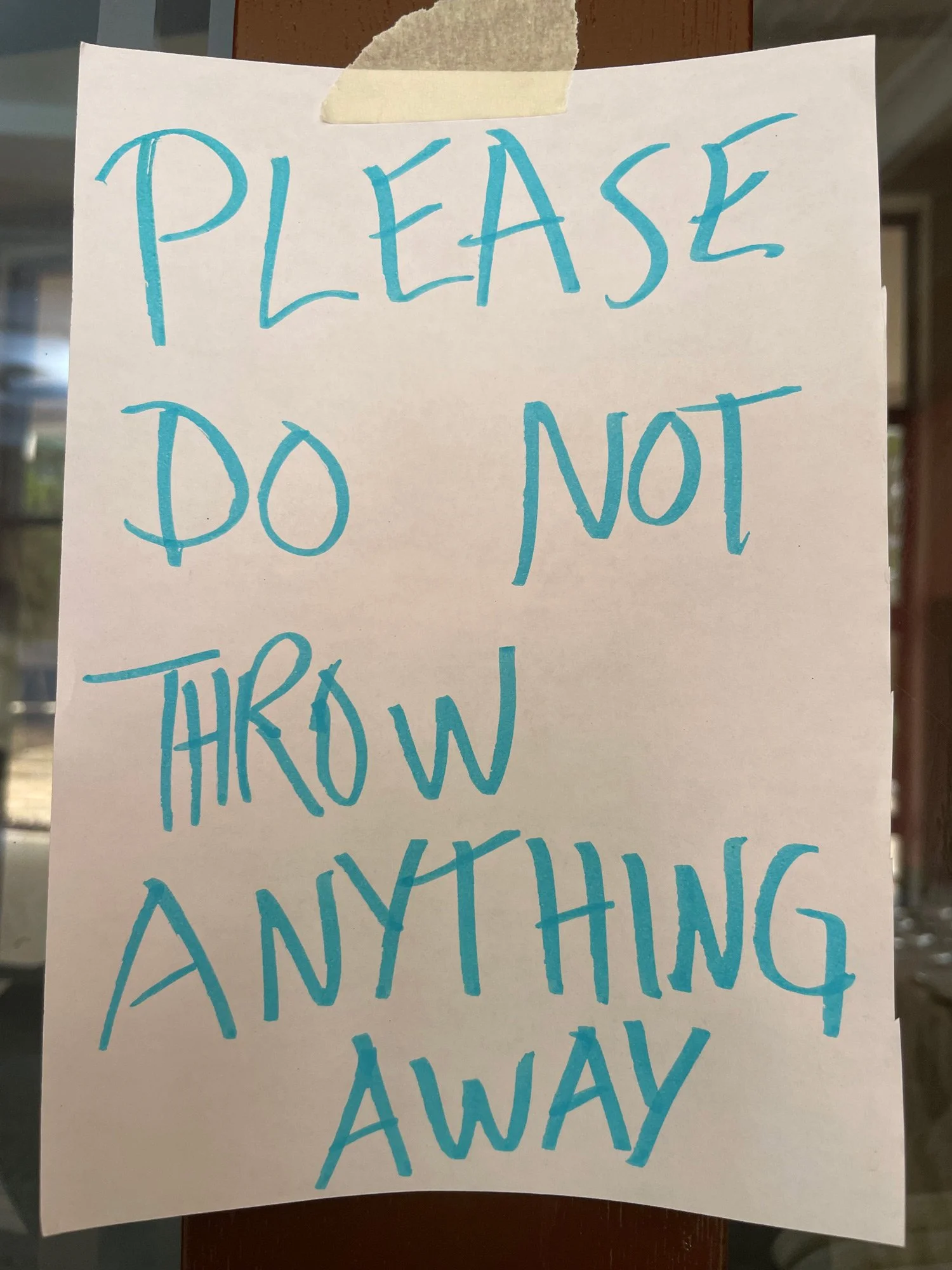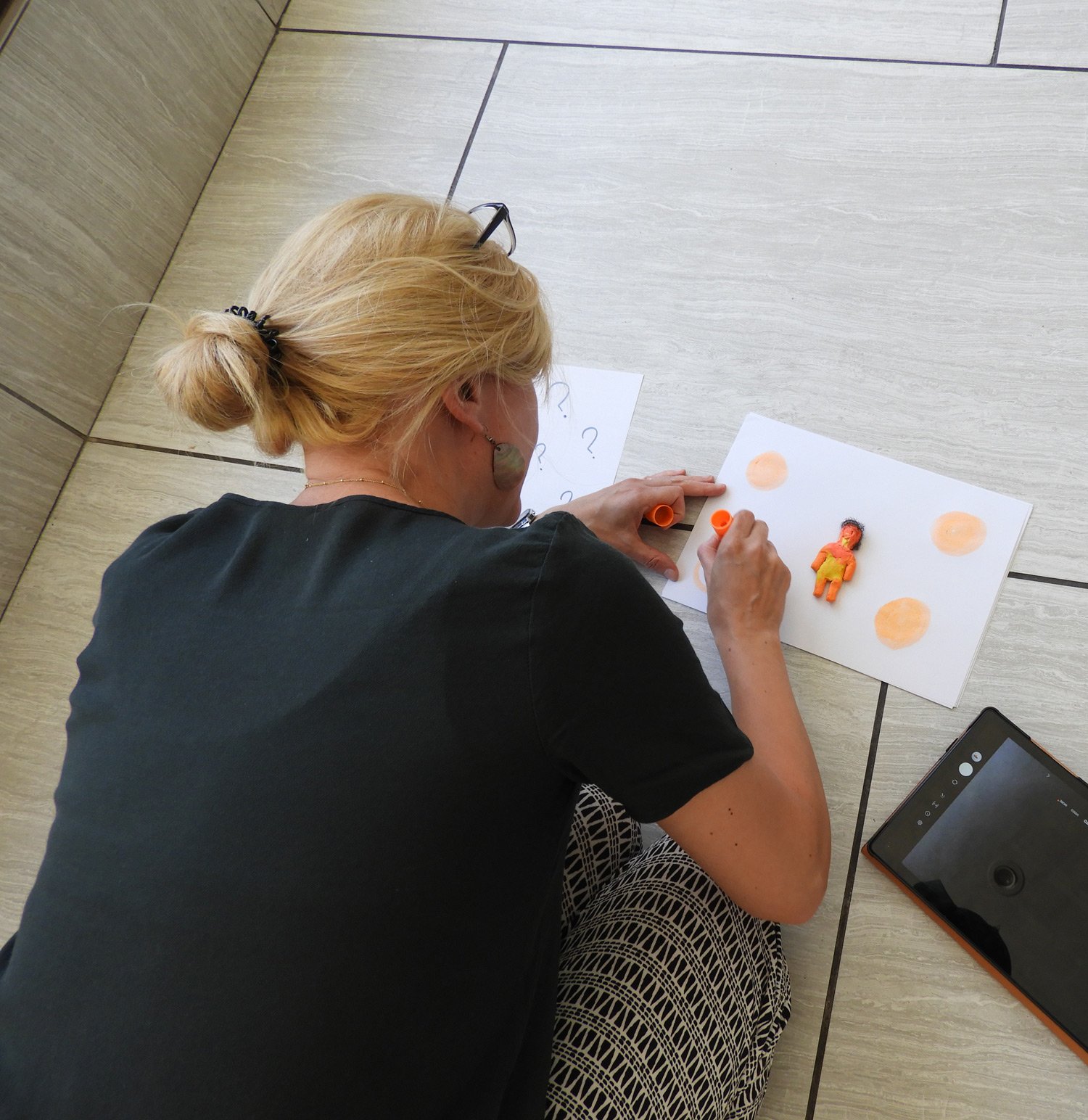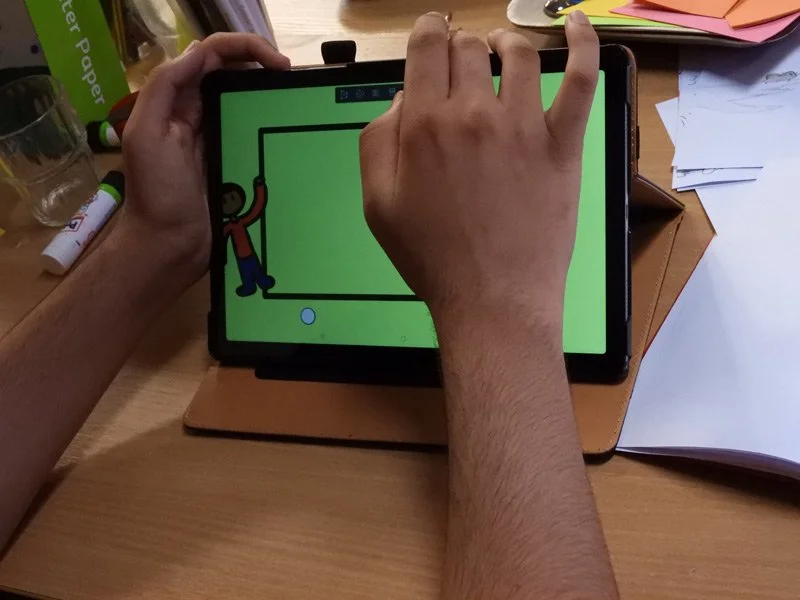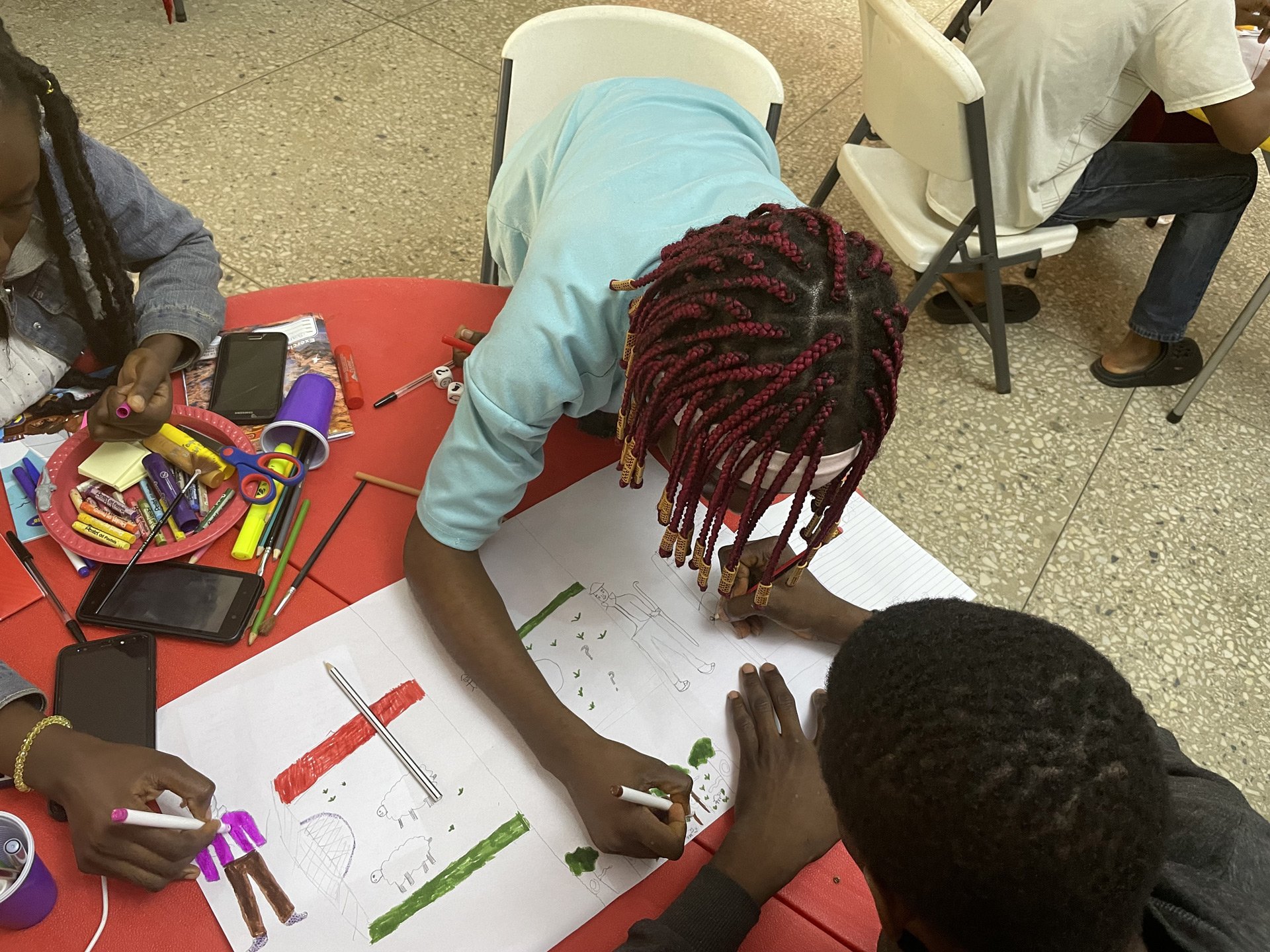
The Power
of Storytelling:
Principles
Principles
Rather than a fixed sequence, storytelling is best approached by thinking about the principles that guide the approach and adapting them to the specific context and groups involved.

Storytelling should:
Be humanising
Be accountable
Respect reciprocal responsibilities of care
Be inclusive
Promote equity
To help think about how these principles are applied in practice, here are some examples and questions to think about for each principle.

“Looking back at my story I feel a bit… embarrassed because I was only sixteen, and I wouldn’t make it like that now. But maybe that’s a good thing? Because stories capture what is important at a particular moment in time - they help us to remember what mattered to us at a point when it really mattered.”
Storytelling workshop participant, UK
Principle 1: Storytelling should be humanising. This means seeing the ‘whole person’.
It is important to treat storytellers as people; not just as participants in a workshop or learners in a classroom – they have lives beyond their involvement in your process. Their lives and needs should be respected and given priority. Appropriate support should be offered wherever possible.
Examples from practice: supporting care responsibilities
When facilitating a residential workshop with teachers in the UK, one asked if they could travel with their family, and we felt it was important to make this possible. In a storytelling project in Zimbabwe, many storytellers have young children, so we fund a family member to attend with them so that they can care for the children when the storytellers are in the workshop. Of course, we also make it clear that if they need to take a break to feed or comfort their child, this is absolutely fine.
We feel that making people feel welcome and comfortable, even if this incurs additional costs for the project, is an essential consideration. It is important to think about the logistical and budget implications of this when planning the work.
Questions to think with:
How does participating in this storytelling process fit with participants’ lives or not?
What are the factors that would make it difficult for someone to take part in the process, such as caring responsibilities or time pressures to earn a living or meet school deadlines?
Principle 2: Storytelling should be accountable.
When people share their stories, we need to be open and transparent about what the process is and what it is for. Then we need to be accountable to them for the commitments we have made: to conduct the storytelling in an ethical way and to use the stories in a way they choose.
Storytelling in research or teaching can be limited by a lack of trust in the process or in the researchers/teachers involved. Keeping commitments that we make to storytellers about the nature of the process and how stories will be used is essential to maintaining trust. It can sometimes be difficult to remain accountable for our commitments when there are external pressures, but it is a very important principle to uphold.
Examples from practice: using stories to communicate with education Policymakers in Nigeria
In November 2023, the Ibali team hosted a learning, impact and stakeholder engagement event in Edo State, Nigeria. Policymakers, teacher educators, and curriculum developers came together to watch and reflect on the stories of inclusion and exclusion that had been developed by the teachers and the young people. The stories were framed and contextualised by a keynote from the Permanent Secretary of the Edo State Ministry of Education on the state’s policies and initiatives for educational inclusion. The design, and guest-list, for the event was sparked by a session with the teachers at the end of their storytelling workshop about who they wanted to see their stories and why. After the event, the Ibali team and the teachers met to discuss how the stories might have shifted people’s thinking around inclusion.
Questions to think with:
How will you explain the storytelling process to participants?
What commitments will you make to the storytellers about what will happen during the storytelling process?
What commitments will you make to the storytellers about what will happen to their stories after they are finished?
Principle 3: Storytelling should respect reciprocal responsibilities of care.
Storytelling about life experiences always involves emotions: those of the storyteller and those of whomever is listening to the stories. To ensure an ethical approach, it is important to recognise reciprocal responsibilities of care towards the storytellers and the researcher/teacher.
Recognising the potential significance for people of sharing their stories means acknowledging that care is needed towards them and towards those who listen to the stories. As the researcher/teacher, this means thinking ahead of time about how this care will be provided and what practical steps for care are needed before, during, and after the storytelling process. This needs to be embedded in every aspect of the process: from what food is offered, to the venue used, and the way that storytellers decide what will happen to their stories.
Examples from practice: providing appropriate psychological and
emotional support to participants and facilitators in South Africa
At the Ibali workshop in South Africa with young people, we discussed the need for counselling and psychological support for the young people with the partner organisations ahead of the workshop. Two chaperones stayed at the venue with us for the entire week, and these were social workers that the young people already knew and trusted. When a young person became overwhelmed during the process, they were able to speak with these chaperones, who could also refer them for additional counselling if it was needed. The chaperones joined the young people at meals and during the breaks so that there were informal opportunities to check in with them, as well as having more structured opportunities for debriefing after the storytelling sessions finished. The team of facilitators also discussed any concerns about storytellers’ mental wellbeing during our facilitation debriefings and requested support from the chaperones when there were concerns. Overall, young people seemed to find this a supportive environment despite it also being emotionally difficult at times.
Members of the research team also had moments of feeling very emotionally overwhelmed during the workshop while listening to the stories. We discussed these reactions as a team and encouraged everyone to seek professional support if necessary. A budget for this was included in the project.
Overall, it is important that the support provided to participants and facilitators is someone that is trusted, and that participants and facilitators are happy to talk to about how they are feeling. This person will be different in different contexts. In some cases, this might be a professional counsellor, and in other cases, it might be a social worker, art therapist, trauma counsellor, or community support worker. This support can be required during the storytelling process and also afterwards, so include resources for this where possible.
Questions to think with:
How will you take care of the participants so that they feel valued, supported, and safe throughout the storytelling process?
How do you need to be taken care of?
Principle 4: Storytelling should be inclusive.
To make storytelling more inclusive, it is important to recognise multiple and overlapping forms of exclusion and inclusion and actively dismantle barriers to taking part.
This means adapting the process and approach to make it more inclusive, depending on who is part of it.
Examples from practice: text-free storytelling in Zimbabwe
Many storytelling research approaches rely on the development of written story scripts. But what if the storytellers can’t, or would prefer not to, read and write? We explored this when leading a strand of storytelling research within SAGE (Supporting Adolescent Girls’ Education), a large-scale, non-formal education programme in Zimbabwe. We worked with a group of adolescent girls who had had limited and intermittent experiences of formal schooling. We created an entirely text-free storytelling workshop to enable maximum inclusion, engagement, and support of the storytellers.
We implemented a number of adaptations, based around an identification of where text might be present, and how we could reduce the need to depend on it. We created visual agendas which detailed each day’s activities. We gave coloured stickers to each storyteller to identify their work so they did not need to write their names, or be able to read another storyteller’s name to know whose work it was. This also helped to keep their contributions and artwork anonymous to anyone outside of the workshop space.
We used an extended range of multi-modal activities and created visual ways to represent story development including large, editable story maps where different elements and characters could be moved around the map as the story developed. For these activities, we used large crayons and markers, because pen-grip can be difficult or tiring for people who are not regular writers.
You can read more about these adaptations here.
Questions to think with:
Why would those I am asking to take part want to tell a story about themselves?
What risks might they experience as a result? How will I address these risks?
How can I make people feel included and respected throughout the storytelling process?
Principle 5: Storytelling should promote equity.
Equity in storytelling means that we need to recognise differences in power, position, and incentives between participants and ourselves, and ensure fairness in involvement and how stories are treated and used.
Examples from practice: multi-optioned story use consent process
It is conventional in research activities across academia, policy and practice that research participants fill in a consent form before they share information that might be used as data. In this kind of storytelling work – whether for research or practice – we have pre-workshop consent forms for storytellers to indicate their understanding of what they are signing up for, and their willingness to engage with this. However, we also use an additional post-workshop consent process. This is for two main reasons.
First, in creative research, it is common that stories, emotions, perspectives, and messages might be evoked that neither the researchers n or the storytellers could have predicted at the start of the process. While this is what can make the learning through storytelling so rich, it is important that the storytellers have further opportunities to communicate which parts of the data they are happy for the researchers to use and how.
Second, a central belief of this kind of storytelling is that the story belongs to the person or people who shared, crafted, and told it. The facilitators / researchers support the process but do not own the rights to the story. We always ask the storytellers’ permission to use the story for each of the different ways we might consider using it. One option is that they take the story away with them, and we delete it from our devices. In over 20 years of facilitating story workshops, this has only happened a handful of times, but it is important to emphasise to storytellers that it is a genuine option.
Beyond this, we offer a series of options tailored to the type of storytelling initiative and its objectives. For example, we might differentiate between permission to show their story at events related to the focus of the storytelling workshop, and events related to storytelling methodologies. We also ask them how they would like the story to be attributed, and if there is any information they would like us to share with an audience when we screen or share their story.
In some projects, especially when the storytellers are young or have a vulnerability, we commit to following up with them at an agreed-upon date (for example, a year after the workshopa) after the workshop so they can reflect on whether they would like to change their permissions. We also make it clear that storytellers can contact us at any time if they would like to change their permissions, and provide clear pathways of communication through our partners to facilitate this.
Questions to think with:
Who will control what happens to the stories after they are finished?
Who decides what happens to images or other data from storytelling workshops?
In what ways can you involve participants in key decisions throughout the process?











